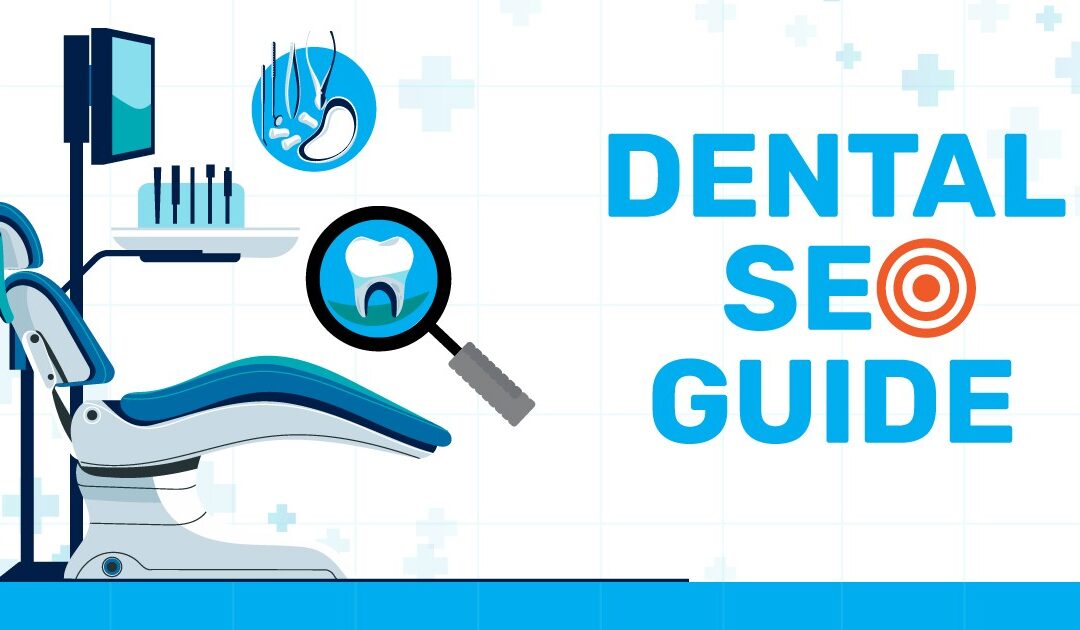As a dentist, securing a top spot on Google’s first page is highly competitive. How can you differentiate your practice and maximize your online visibility? The key lies in launching a local search engine optimization (local SEO) campaign using a reliable, step-by-step strategy. By adhering to the following five steps, you’ll enhance your advantage over nearby dental practices.
Three Compelling Reasons for Dentists to Invest in Local SEO
Reason #1: Google Has Replaced the Yellow Pages
Increasingly, patients rely on search engines to find local businesses via their computers and smartphones. Consider these statistics from Google:
- 20% of search queries are for local businesses.
- 40% of mobile searches are for local businesses.
- 97% of consumers look for local businesses online.
Reason #2: Consistent Free Traffic
Achieving a top ranking on Google means consistent free traffic and new patients for your practice. SEO stands out as one of the most valuable marketing investments for dentists.
Reason #3: Rapid Results
Contrary to popular belief, obtaining first-page rankings on Google can be quicker than expected, especially in local markets. Many dentists don’t implement SEO best practices, so by following the five steps in this article, you can often see first-page results within 30 days.
Here are the five essential steps to building a local SEO for dentist campaign that enhances your online visibility, attracts ideal patients, and boosts your practice’s profitability.
Step 1. Keyword research
Begin this step by compiling a comprehensive list of the services your dental practice offers, such as fillings, crowns, teeth cleaning, and orthodontics. Then, utilize the Keyword Planner Tool within the Google Ads platform to discover which keywords potential patients use when searching for these dental seo marketing (For more information, check out our Guide to Google Ads for Dentists.)
Don’t worry about advertising on Google at this point. We are simply leveraging Google’s free Keyword Tool to pinpoint the most effective keywords for your dental local SEO strategy.
Prioritize Keywords with Hiring Intent
Dental practices should consider two types of keywords:
- Hiring Intent Keywords
- Research Intent Keywords
Your main priority should be to rank for hiring intent keywords, as these typically indicate that the searcher is ready to take action. For instance, a keyword like “teeth whitening dentist” demonstrates hiring intent. Such transactional keywords should be used to optimize your homepage and service pages.
On the other hand, research intent keywords are primarily for gathering information. Keywords like “teeth whitening at home” or “teeth whitening DIY” suggest that the searcher is not looking to hire a dentist but to learn more about the topic. Similarly, someone searching for the “cost of dental implants” is likely in the information-gathering stage, not necessarily ready to book an appointment.
However, research intent keywords are valuable too. They can enhance your SEO strategy by serving as topics for FAQ pages or blog articles. For instance, keywords like “benefits of electric toothbrushes” or “cost of dental implants” can be transformed into informative blog posts, helping to engage potential patients during their research phase.
In summary, start by optimizing your homepage and service pages with hiring intent keywords. Once that’s established, create informational content around research intent keywords to further attract and educate potential patients.
Step 2. Keyword Optimization
There are two primary types of pages you need to optimize. First, your Google My Business page, which can yield the quickest improvements. Second, make sure to optimize the essential pages on your website.
Your Google My Business Page
Your Google My Business (GMB) page appears in the “Map” results for local dentist-related searches. An optimized GMB page is crucial for your SEO efforts, offering a powerful introduction to your practice for prospective patients. Additionally, it’s often quicker and easier to achieve a higher ranking for your GMB page compared to your website, with Google prioritizing these map results at the top of search pages.
Steps to Optimize Your Google My Business Page:
Verification
First, claim and verify your page with Google to make any edits. Confirm your profile’s verification by logging into your dashboard; a checkmark and the word “Verified” should appear next to your business name. If not verified, you’ll see a “Verify Now” prompt. Ensure you merge any duplicate pages for the same location.
Name, Address, and Phone Number (NAP)
Use your official practice name and precise address to help Google accurately map your location. For the phone number, use a local number instead of a toll-free one to reinforce your local presence. Consistency in your NAP information across your GMB page, website, and other directories (such as Facebook, Yellow Pages, etc.) is critical.
Categories
Follow Google’s guidelines by selecting categories that describe what your practice is rather than what it does. For example, use “orthodontics” instead of “teeth straightening.” Relevant categories for dentists might include: Dentist, Cosmetic Dentist, Dental Clinic, Dental Implants Periodontist, Emergency Dental Service, Endodontist, and Pediatric Dentist. Choose 3-5 categories that best represent your services.
Description
Craft a well-written, error-free description to introduce your practice to potential patients. Use a conversational tone and incorporate keywords related to your dental services and specialties. An example format could be:
“{Name of Practice} offers quality {list of dental services} in {Your City}. {Provide a brief history of your practice or reasons why patients choose you.} Call {Phone Number} today to schedule your appointment!”
Aim for a description length of 100-200 words.
Hours
Ensure the hours of operation on your GMB page (and website) are accurate. This is especially important if you have seasonal hours or extended hours in the mornings, evenings, or weekends.
Images
Upload exterior and interior photos, as well as your practice’s logo. High-quality images increase engagement, help patients locate your practice, and convey your business’s story. Make sure your images are clear, well-lit, between 10KB and 5MB in size, with a minimum resolution of 720px by 720px. Replace the generic GMB background image with a branded one for a professional touch.
Optimizing Your Website
Start by refining your “core pages” – the homepage and service pages – to align with the keywords your potential patients are searching for. Focus primarily on hiring intent keywords.
Homepage Optimization
The key element to optimize on your homepage is the title tag (or page title). Although it’s not visible on the page, it appears at the top of the web browser and as the blue underlined link in Google’s search results. Think of title tags as chapter titles in a book, with your homepage’s title tag being the most critical.
Primary Keyword Selection: Identify the most obvious keyword people might use when looking for a dentist in your area. For example, “Dentist in [Your City].” Brainstorm and verify these keywords using Google’s Keyword Planner.
Writing Your Title Tag: An effective format is: “Dentist in [Your City] | [Name of Your Practice].” For example, “Dentist in NYC | Manhattan Dental Associates.” Aim for 50-65 characters in length.
Meta Description: Create a unique meta description for your homepage that highlights your services. This text appears below the link in search results. For instance: “Manhattan Dental Associates offer quality general and cosmetic dentistry in New York City. Call 212-XXX-XXXX to schedule your appointment!” Keep it between 100-150 characters.
Headline (H1): The visible headline of the page should incorporate a relevant keyword. Make it descriptive yet concise, like “General & Cosmetic Dentistry in NYC.”
Website Copy: Ensure your homepage has sufficient text – ideally 500-1000 words. Provide background information about your practice and detail your services. Include your target keyword naturally within the copy to make it compelling and engaging.
Service Pages Optimization
Avoid the common mistake of having a single “Services” page with brief descriptions. Instead, create separate pages for each dental service you offer. This improves your chances of ranking for specific searches.
For example, if you offer both cosmetic and general dentistry, create individual pages for each, and sub-pages for specific services like teeth whitening and dental implants. Optimize each page with relevant keywords following the steps for the homepage:
- Title Tag
- Meta Description
- Header (H1)
- Body Copy
Each page should have unique title tags, meta descriptions, and content to avoid duplicate content issues that can hurt your ranking.
Content Pages
After optimizing your core pages, focus on creating “content assets” or content pages. Start by researching keywords with Google’s Keyword Planner to find relevant topics. For instance, if you offer dental implants, you might find people search for “cost of dental implants.” Create a page addressing this topic.
Content Placement:
- FAQ Section: Develop a Frequently Asked Questions section. List common questions from patients and create individual pages for each question and answer. Each Q&A can range from 100 to 1000 words.
- Blog: Use a blog to delve deeper into topics. Blog posts should be detailed, ranging from 300 words to several thousand for comprehensive articles.
For both FAQs and blog posts, follow the same optimization guidelines as for your homepage and service pages: draft unique title tags and meta descriptions, and ensure the body copy is well-written and incorporates relevant keywords naturally.
Step 3. Citations and Links
Optimizing your website and Google My Business page are essential first steps to improve your ranking on Google. However, to truly stand out in a competitive field, you need to go further. Building citations and acquiring backlinks are the next critical steps to differentiate your practice from other local dentists.
Citations
Citations refer to mentions of your practice’s Name, Address, and Phone number (NAP). Begin by ensuring that your NAP details are prominently displayed on your own website, particularly on your contact page and in the footer.
Next, expand your citations by listing your practice in relevant online directories. The most important listing is your Google My Business page, but there are many other directories that can boost your visibility and help you rank higher on Google.
Here are three main categories of directories to consider:
- General, National Business Directories
Start by getting listed in major national directories. In the U.S., key directories include Yelp, Yellow Pages, and Citysearch. Additionally, set up a Facebook page for your practice.
- Industry-Specific Directories
Submit your practice to dental and medical-specific directories such as Everydentist and Implant Directory. While some of these directories are free, others may charge a fee. Focus on free listings initially, and for paid directories, ensure they generate referral traffic, which you can track via Google Analytics.
- Local Directories
Look for local business directories in your area, such as your local Chamber of Commerce website.
Important: Ensure your business NAP information is consistent across all directories to avoid any discrepancies.
Links
Hyperlinks from other websites to yours, known as inbound links, are crucial for SEO. Google values the quality and quantity of these links, as they act as endorsements of your website’s authority and relevance. Generally, more high-quality links can boost your website’s authority and ranking for competitive search terms.
Strategies to Build Links:
- Directories
As previously mentioned, submitting your practice to various directories helps with both citations and backlinks. Most directory listings provide a link to your website along with your NAP details.
- Offline Relationships
Leverage existing offline relationships to gain backlinks. For example, you might have referral relationships with other medical professionals and can exchange links as recommended resources. Memberships in associations or sponsorships of local events can also be opportunities for backlinks.
- Competitor Research
Investigate which websites link to your competitors. Use tools like Moz’s Open Site Explorer to identify these backlinks and explore similar opportunities for your own website. This can reveal additional directories and other backlink opportunities.
There are many more strategies to build links, but these tips will give you a strong foundation to start enhancing your online presence.
Step 4. Reviews
Enhancing your online presence with reviews can be a game-changer in outshining local competitors and improving your rankings on Google’s Search Engine Results Pages (SERPs).
Leveraging Google My Business Reviews
While reviews can be left on various platforms like Yelp or HealthGrades, prioritizing positive reviews on your Google My Business (GMB) page offers significant benefits.
Impact on Rankings: Positive reviews on your GMB page can boost its ranking, increasing visibility to potential patients and improving your chances of being contacted.
Building Trust: Prospective patients are more likely to trust and choose your practice when they see a collection of positive reviews.
Strategies for Getting Reviews
Apart from delivering exceptional services, actively seeking reviews and simplifying the process for patients is crucial.
Review Request Emails: Send personalized “review request” emails to your patients, providing a direct link to leave a review on your GMB page.
How to Find Your GMB Page: Search your practice name and location on Google to locate your GMB profile. Click on “Write a Review” to generate the review link, which you can include in your email template.
Sample Email Template: Subject: Your Feedback Matters to Us!
Dear [Patient’s Name],
We value your experience at [Your Practice Name] and would appreciate your feedback. Many patients discover us through Google, and your review can help others make informed decisions.
Please take a moment to share your thoughts by posting a review on our Google My Business page: [Insert GMB review link here].
Thank you for choosing us and for your continued support!
Best regards, [Your Name] [Your Practice Name] [Contact Information]
Regular Review Requests: Incorporate review requests into your business process, reaching out to all patients who haven’t yet left a review. This ongoing effort ensures a steady flow of reviews over time.
By actively seeking and showcasing positive reviews, you not only enhance your online reputation but also strengthen your position in local search results, attracting more patients to your practice.
Step 5. Tracking
Effective tracking is pivotal for the success of your SEO strategies. As Peter Drucker, a renowned business expert, said, “What’s measured, improves.” Let’s delve into the three key metrics you should monitor and how to track them effectively.
A) Rankings
Start by keeping tabs on your keyword rankings, typically checked monthly. Utilize tools like Google Search Console, which reveals your keyword rankings, impressions, and clicks in Google search results. Alternatively, consider a comprehensive tool like Rank Ranger, beneficial for tracking both website and Google My Business rankings.
B) Traffic
While rankings are crucial, monitoring website traffic is equally important. Google Analytics is your go-to tool here. Install it across your website to gain insights into overall traffic, Google-specific traffic, and page-specific traffic. Regular monthly reviews help identify long-term traffic trends, showcasing the growth of your SEO efforts.
C) Conversions
Beyond rankings and traffic, track conversions to gauge the effectiveness of your SEO in driving desired actions. A “conversion” can be actions like scheduling appointments via web forms. Set up Goal Tracking in Google Analytics to monitor these conversions. Analyze monthly conversion rates, especially those stemming from your SEO endeavors, to assess their impact on acquiring new patients.
By diligently tracking these metrics, you gain invaluable insights into the effectiveness of your SEO strategies and can make informed decisions to continually improve your online presence and attract more patients.
Conclusion
In summary, a well-managed local SEO for dentist campaign holds immense potential as a top-notch marketing strategy for your dental practice. To maximize its benefits, it’s crucial to adopt a systematic approach to SEO.
To outline, here are the five essential steps you should follow:
- Conduct thorough keyword research.
- Optimize your content based on identified keywords.
- Focus on building citations and acquiring quality backlinks.
- Cultivate positive reviews to enhance credibility and attract more patients.
- Implement robust tracking mechanisms to monitor performance and make data-driven decisions.
By adhering to these strategic steps, you can elevate your search engine rankings, drive increased traffic to your website, and ultimately, draw in a larger pool of potential patients to your practice!




